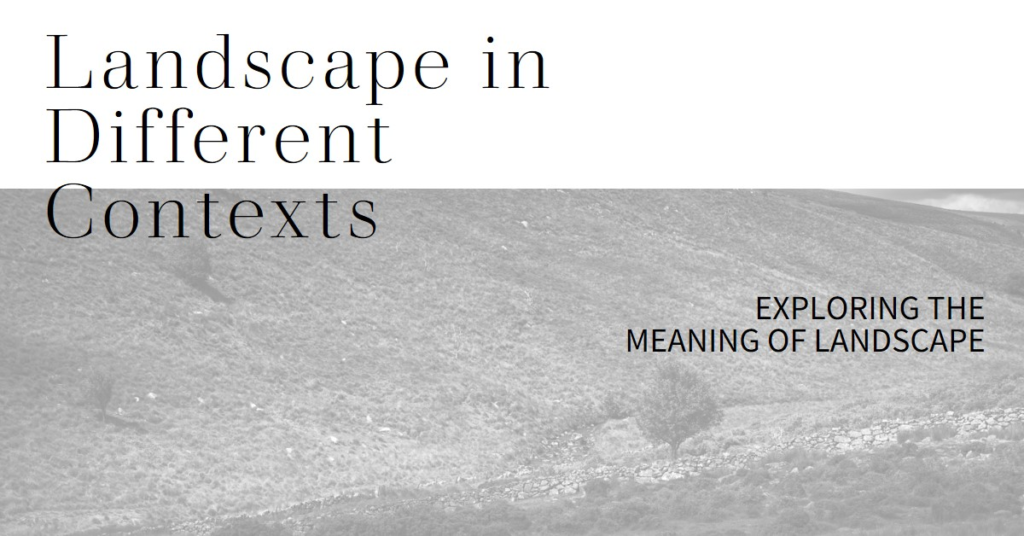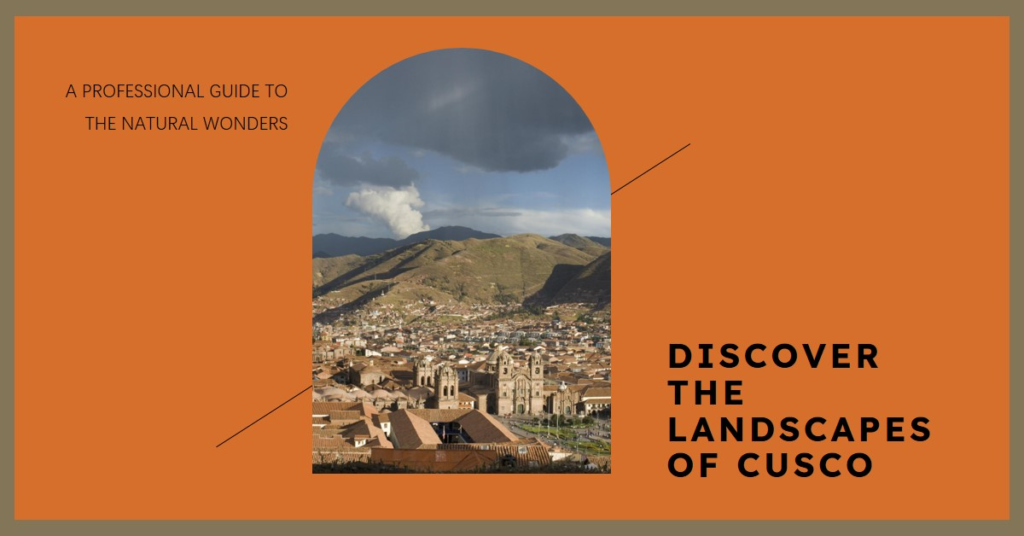
Table of Contents
- Introduction
- 1. Landscape in Geography: The Physical Terrain
- 2. Cultural Landscape: The Intersection of Nature and Human Culture
- 3. The Aesthetic Landscape: Art and Perception
- 4. Psychological Landscapes: The Mind’s Terrain
- 5. The Political Landscape: Power and Governance
- 6. Economic Landscapes: The Terrain of Commerce and Industry
- 7. Technological Landscapes: The Digital Terrain
- 8. Social Landscapes: Community and Interaction
- 9. Ecological Landscapes: The Interconnected Ecosystems
- Conclusion: The Integrative Nature of Landscape
Introduction
Landscape, a term often synonymous with the physical environment, extends far beyond its traditional roots. It encapsulates various interpretations and applications across different fields, reflecting the intricate relationship between humans and their surroundings. This blog post delves into the diverse meanings of landscape, exploring how it is perceived and utilized in a range of contexts. From geographical terrains to mental landscapes, we uncover the multifaceted nature of this concept.
1. Landscape in Geography: The Physical Terrain
The Natural World
In geography, landscape refers to the physical features of a portion of the Earth’s surface. It includes mountains, valleys, rivers, forests, and other natural elements that form the visual aspects of a region. Geographers study these physical landscapes to understand the processes that shape them over time, such as erosion, volcanic activity, and tectonic movements.
Understanding geographical landscapes is crucial for environmental conservation and management. By analyzing the natural terrain, geographers can predict geological events, manage natural resources, and develop strategies to mitigate the impact of human activities on the environment.
Human Impact
The geographical landscape is not solely defined by natural features; human activities significantly alter and reshape it. Urbanization, agriculture, and industrialization transform natural landscapes into built environments. These changes reflect the dynamic interaction between humans and nature, highlighting the role of human agency in landscape formation.
Studying the impact of human activities on landscapes helps in planning sustainable development. Geographers and urban planners collaborate to design cities and infrastructure that harmonize with the natural environment, promoting ecological balance and enhancing the quality of life.
2. Cultural Landscape: The Intersection of Nature and Human Culture
Historical Perspectives
The concept of a cultural landscape emphasizes the interaction between human culture and the natural environment. These landscapes are imbued with cultural significance, shaped by historical events, traditions, and societal values. UNESCO’s World Heritage Sites, such as the terraced rice fields of the Philippines or the historic gardens of Versailles, are prime examples of cultural landscapes that embody the heritage and identity of communities.
Cultural landscapes offer insights into the historical evolution of human societies. They reveal how people have adapted to and transformed their surroundings over centuries, reflecting cultural practices, technological advancements, and social structures.
Contemporary Context
In contemporary society, cultural landscapes continue to evolve, influenced by globalization, technological innovation, and cultural exchange. Modern cultural landscapes are diverse, ranging from urban cityscapes to rural communities, each with unique characteristics shaped by local and global influences.
Preserving cultural landscapes is essential for maintaining cultural diversity and heritage. Efforts to protect and promote these landscapes involve collaboration between governments, organizations, and local communities, ensuring that cultural identity and historical continuity are maintained for future generations.
3. The Aesthetic Landscape: Art and Perception
Landscape Art
In the realm of art, landscapes have long been a source of inspiration for painters, photographers, and other visual artists. Landscape art captures the beauty and majesty of the natural world, interpreting it through various artistic styles and techniques. From the romanticized views of the Hudson River School to the abstract interpretations of modern artists, landscape art reflects the changing perceptions and aesthetic values of different eras.
Artists use landscapes to convey emotions, tell stories, and explore philosophical concepts. The depiction of landscapes in art can evoke feelings of awe, nostalgia, tranquility, or contemplation, influencing how viewers perceive and connect with their environment.
Photography and Digital Media
With the advent of photography and digital media, the representation of landscapes has expanded beyond traditional art forms. Photographers capture the ephemeral beauty of landscapes, freezing moments in time that reveal the intricate details and vast expanses of the natural world. Digital artists create virtual landscapes, blending reality and imagination to produce surreal and immersive experiences.
These modern representations of landscapes play a significant role in shaping public perception and awareness of environmental issues. Through powerful imagery, artists and media can raise awareness about the importance of preserving natural landscapes and inspire collective action to protect the environment.
4. Psychological Landscapes: The Mind’s Terrain
Mental Landscapes
Beyond the physical realm, landscapes also exist within the human mind. Psychological landscapes refer to the internal terrain of thoughts, emotions, and memories that shape an individual’s mental and emotional state. These landscapes are influenced by personal experiences, cultural background, and social environment.
Exploring psychological landscapes can provide valuable insights into mental health and well-being. Therapists and psychologists use the metaphor of landscapes to help individuals navigate their inner worlds, identify emotional patterns, and develop strategies for mental resilience.
Emotional Connections
The concept of psychological landscapes underscores the deep emotional connection between individuals and their surroundings. Natural landscapes, for example, can evoke powerful emotional responses, providing a sense of peace, inspiration, or nostalgia. This connection is often harnessed in therapeutic practices, such as ecotherapy, where exposure to natural environments is used to promote mental health and well-being.
Understanding the psychological impact of landscapes highlights the importance of creating environments that support mental and emotional health. Urban planners and designers consider factors such as green spaces, aesthetic appeal, and sensory experiences to foster positive psychological landscapes in urban settings.
5. The Political Landscape: Power and Governance
Political Geography
In the context of politics, landscape refers to the distribution and organization of power and governance across a region. Political landscapes are shaped by historical events, ideological movements, and geopolitical strategies. The division of territories, the establishment of borders, and the formation of political entities reflect the complex dynamics of power relations and statecraft.
Analyzing political landscapes helps in understanding the factors that influence political stability, conflict, and cooperation. It provides insights into the interplay between geography, resources, and political power, informing policies and strategies for governance and international relations.
Electoral Landscapes
The term “political landscape” also extends to electoral politics, where it describes the distribution of political support and party dominance within a region. Electoral landscapes are analyzed to understand voting patterns, predict election outcomes, and develop campaign strategies. Factors such as demographic trends, socio-economic conditions, and cultural influences shape the electoral landscape, affecting the balance of political power.
Understanding electoral landscapes is crucial for democratic processes. It enables political parties, candidates, and policymakers to address the needs and concerns of diverse communities, fostering inclusive and representative governance.


6. Economic Landscapes: The Terrain of Commerce and Industry
Economic Geography
Economic landscapes refer to the spatial distribution of economic activities, industries, and resources. Economic geographers study how economic processes shape the physical and social environment, influencing patterns of trade, labor, and production. Factors such as resource availability, infrastructure, and market dynamics determine the economic landscape of a region.
Analyzing economic landscapes is essential for economic planning and development. It helps identify opportunities for growth, address regional disparities, and develop strategies for sustainable economic development.
Globalization and Trade
In the era of globalization, economic landscapes are increasingly interconnected, with global trade networks shaping the economic terrain of regions worldwide. The flow of goods, services, capital, and labor across borders creates complex economic landscapes that reflect the interdependence of global economies.
Understanding the dynamics of global economic landscapes is crucial for navigating the challenges and opportunities of globalization. It informs policies on trade, investment, and economic cooperation, promoting inclusive and sustainable economic growth.
7. Technological Landscapes: The Digital Terrain
Digital Transformation
The advent of digital technology has given rise to new landscapes in the form of digital and virtual environments. Technological landscapes encompass the infrastructure, platforms, and networks that facilitate digital communication, information exchange, and innovation. The rapid pace of technological advancement continually reshapes these landscapes, creating new opportunities and challenges.
Understanding technological landscapes is vital for navigating the digital age. It involves studying the impact of technology on society, economy, and culture, and developing strategies to leverage technological advancements for societal benefit.
Cybersecurity and Digital Governance
The digital landscape also includes the realm of cybersecurity and digital governance. As digital technologies become integral to daily life, protecting digital landscapes from cyber threats and ensuring robust digital governance are critical. This involves developing policies and frameworks to safeguard data privacy, prevent cybercrime, and promote ethical use of technology.
Addressing the challenges of the digital landscape requires a collaborative approach involving governments, businesses, and individuals. It emphasizes the need for continuous innovation, education, and regulation to create a secure and inclusive digital environment.
8. Social Landscapes: Community and Interaction
Social Networks
Social landscapes refer to the patterns of relationships, interactions, and networks within a society. These landscapes are shaped by social structures, cultural norms, and communication practices. Social scientists study social landscapes to understand the dynamics of communities, social cohesion, and the factors that influence social behavior.
Analyzing social landscapes helps in addressing social issues, fostering community development, and promoting social justice. It provides insights into the mechanisms of social change and the role of social networks in shaping individual and collective experiences.
Urban and Rural Communities
The social landscape varies significantly between urban and rural settings, each with distinct characteristics and challenges. Urban landscapes are characterized by dense populations, diverse communities, and complex social dynamics, while rural landscapes often feature close-knit communities and a stronger connection to the natural environment.
Understanding the social landscapes of urban and rural areas is essential for developing targeted policies and programs. It helps address the unique needs of different communities, promoting social inclusion and equitable development.
9. Ecological Landscapes: The Interconnected Ecosystems
Biodiversity and Ecosystems
Ecological landscapes refer to the complex web of ecosystems and biodiversity that form the natural environment. These landscapes are characterized by the interdependence of species, habitats, and ecological processes. Ecologists study ecological landscapes to understand the functioning of ecosystems, the impact of human activities, and strategies for conservation.
Preserving ecological landscapes is crucial for maintaining biodiversity and ecological balance. Conservation efforts focus on protecting natural habitats, restoring degraded ecosystems, and promoting sustainable practices that minimize human impact on the environment.
Climate Change and Sustainability
The concept of ecological landscapes is closely linked to the challenges of climate change and sustainability. Climate change alters ecological landscapes, affecting biodiversity, ecosystem services, and the resilience of natural systems. Sustainable management of ecological landscapes involves mitigating the effects of climate change, promoting adaptive strategies, and enhancing the capacity of ecosystems to withstand environmental changes.
Understanding ecological landscapes is essential for addressing the global environmental crisis. It emphasizes the need for integrated approaches that consider the interconnectedness of ecological, social, and economic systems, promoting a sustainable and resilient future.
Conclusion: The Integrative Nature of Landscape
Landscape, as a concept, transcends its traditional definition of physical terrain, encompassing a multitude of interpretations across different contexts. Whether viewed through the lens of geography, culture, art, psychology, politics, economics, technology, society, or ecology, the landscape reflects the dynamic and multifaceted relationship between humans and their environment. By exploring the diverse meanings of landscape, we gain a deeper understanding of our world and the intricate connections that shape our experiences and perceptions.


